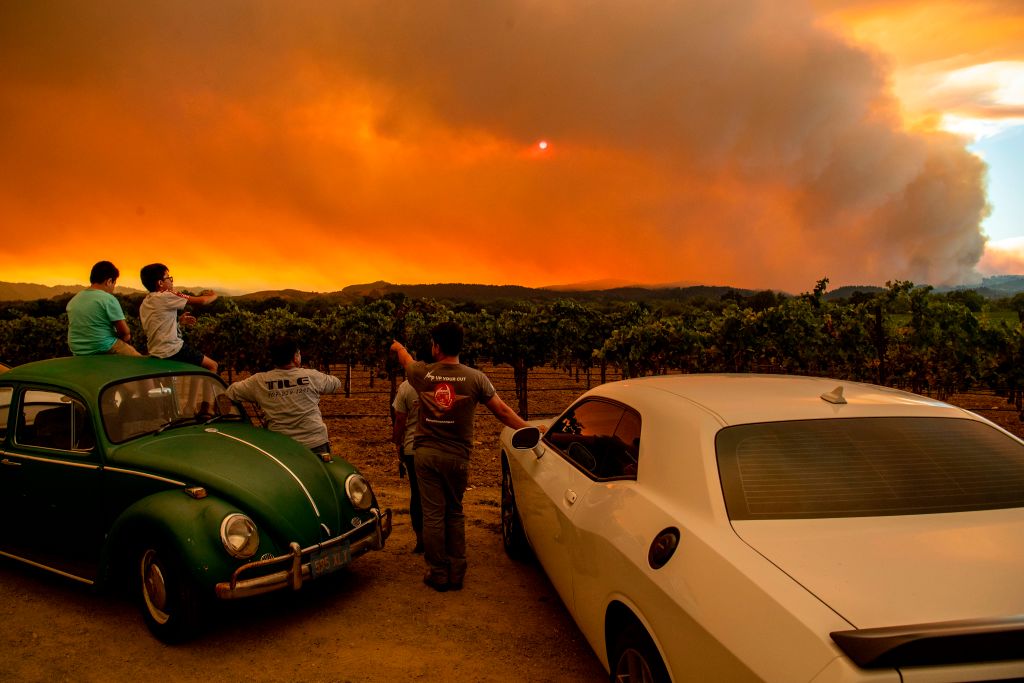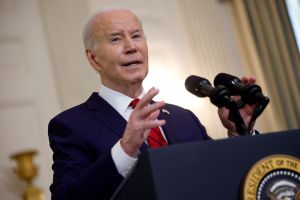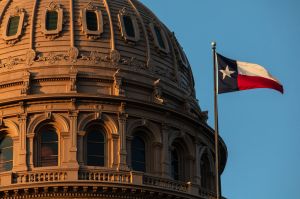Oakland
The air in Northern California was thick and yellow in November 2018. The hills were wrapped not in salty fog, but a thin layer of ashes, some of which were doubtlessly human remains. The Paradise Fire raged for over two weeks, burning through 150,000 acres and consuming 85 souls.
The air quality officially became ‘dangerous’. Not to sound like a whiny Californian, but under such conditions you become aware of taking a breath. Once it happens, life becomes oppressive. When the choice is between taking a deep breath to get some oxygen, or trying not to take too deep of a breath because it may further trigger out of control allergies — what’s with all these particles in the air? — the natural inclination is to leave. Your eyes start burning, too. That November we scrambled our Thanksgiving plans and drove to LA, effectively as environmental refugees.
Santa Ana Winds are nothing new in Southern California. Strong, hot and dry, gusts pass from the Great Basin towards the Pacific every fall, inflaming dry brush in the area and sending thousands fleeing their homes. But over the last few years Northern California, also dry by the end of the summer, has been set aflame. Those fires have become far more catastrophic.
In a remarkably honest Mother Jones article, Elizabeth Shogren explained that the wildfires that have been terrorizing Northern California in the late 2010s have been caused by more than a century of fire suppression, resulting in overgrowth which supplied fires with plenty of fuel to burn through. For thousands of years previously, Native Americans managed the land with controlled burns, creating secure habitats and preferable hunting conditions — what was necessary for continuation of their way of life.
Traditional practices stand in contrast to our own environmental policies. According to a Reason Foundation study, the Clinton-era anti-logging policies resulted in runaway growth of tree density. When in the 1990s the Spotted Owl was placed on the endangered species list, culling plummeted and wildfires became increasingly catastrophic throughout the West. I think the Spotted Owl is very cute, of course, but it would be nice if we could find a way to live in harmony with this flock. I doubt the birds like the forest fires either.
In the meantime, California politicians have resorted to their favorite demagogic tropes: blaming climate change and corporations. Addressing this year’s Democratic National Convention, Gov. Gavin Newsom declared: ‘Hots are getting hotter, drys are getting drier; climate change is real.’ He was talking of a record-breaking temperature recorded in Death Valley that very week that he seemingly believes caused the early start of the 2020 fire season elsewhere in the state. However, if Newsom thinks hot and dry weather is what triggered the wildfires, he is demonstrably wrong.
The weather data is always full of noise; there is also a record high and a record low somewhere. It just so happened that the heatwave the governor was referring to is the first one in an otherwise cool summer. Prior to the fires, the air had been uncharacteristically humid. In this case the immediate cause of the multiple Northern California fires was dry lightning. The air was thick and moist, but no rain followed. Unusual weather yes, but not in the way Newsom described
Of course, when all else fails, there is still capitalism to blame. Last year Newsom accused the Northern California utility provider PG&E of ‘greed’ which in his opinion caused the catastrophic fires and subsequent rolling blackouts. It’s a strange charge, considering that the profit the company is allowed to make is overseen by the State of California.
***
Get a digital subscription to The Spectator.
Try a month free, then just $3.99 a month
***
It’s certainly true that the corporation should probably pay more attention to maintaining its electrical grid than investing in ‘green energy’ or producing TV commercials praising itself for inclusivity. But it’s also true that California law made PG&E into a designated fall guy. The power company is held responsible for a fire if it’s deemed that its equipment has been involved in it, even if it did due diligence in preventing the burn. In 110-degree arid heat, the tiniest spark emitted from a power line can ignite an inferno.
If a utility company is found guilty — and I’m not saying that it never is — ordinary people assume that it intentionally put them in jeopardy. Newspapers dutifully carry the headlines of PG&E culpability and politicians get to deflect the blame.
Since the shelter-in-place regime took place in California, its cities, especially the coastal cities, have been going from bad to worse. In addition to junkie encampments, already swallowing sidewalks, we get boarded-up storefronts, limited mobility, BLM signage, masks on every human. Businesses have been closing down at a spellbinding rate, with the population fleeing eastward. But what will finish California will be mismanagement of the environment. There are no indoor public spaces here because of the quarantine and with the fires raging everywhere, we can’t hang out outside either. Besides, there is no reason to live here but to inhale the ocean air while sipping a glass of Cab. Right now the state is in the middle of a yearly ‘we can’t breathe’ episode.


















